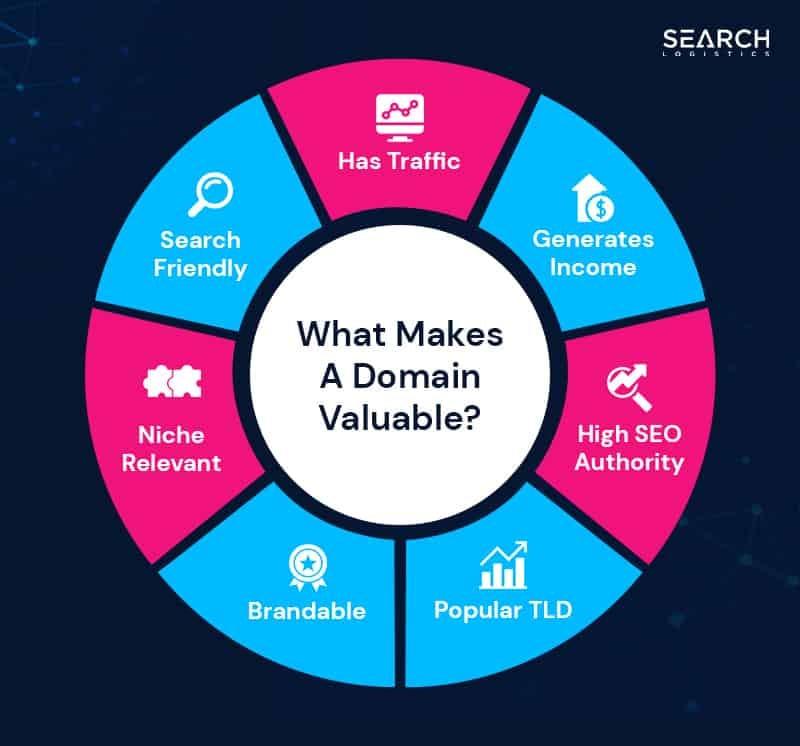Table of Contents
- Understanding the Value of Aged Domains for SEO Success
- Key Factors to Evaluate When Purchasing Aged Domains
- Potential Pitfalls and How to Avoid Them in Aged Domain Acquisitions
- Practical Strategies for Successfully Integrating Aged Domains into Your Portfolio
- Real-Life Case Studies Demonstrating the Impact of Aged Domains on Traffic and Rankings
- Q&A
- To Conclude
Understanding the Value of Aged Domains for SEO Success
Acquiring aged domains can significantly enhance SEO strategies, offering inherent advantages that fresh domains might lack. One key benefit of these well-established domains is their existing authority and trust, built over time, that can positively impact search engine ranking. Search engines often prioritize domains with a history of legitimacy and relevance, translating into improved visibility for your content. Leveraging a domain with an established presence ensures a head start in the competitive race for top search results, saving time and effort in fighting the uphill battle from square one.
Another compelling reason to invest in aged domains lies in their successfully maintained backlink profile. These domains often come with a network of high-quality links pointing back to them, which is a crucial factor for ranking highly on search engines. This existing network can provide your site with significant link equity, boosting its SEO performance. When evaluating potential purchases, it’s essential to conduct due diligence on the backlink quality and history to avoid any with a past of spammy or irrelevant links, which could harm your site’s reputation instead of enhancing it.
Aged domains typically garner a pre-existing traffic flow, beneficial for businesses seeking quick entry into the market. This built-in audience, derived from the domain’s previous life, can provide an immediate boost to site visits—something invaluable when launching new marketing campaigns. Below are some key benefits to seek out when evaluating aged domains:
- Established Brand Recognition: Previously recognized names can bring a loyal customer base.
- SEO Value: Mature domains often have a better position in search results.
- Traffic Metrics: Analyze the consistency and volume of past traffic flow.
- Email Lists: Access to existing subscribers can enhance promotional efforts.
| Aspect | Potential Advantage |
|---|---|
| Domain Age | Higher search engine rankings |
| Backlink Quality | Improved link equity |
| Pre-existing Traffic | Immediate audience engagement |


Key Factors to Evaluate When Purchasing Aged Domains
When delving into the world of aged domains, one of the primary aspects to consider is domain history. Investigate the domain’s previous use to determine if it aligns with your business goals. Analyzing its history can unveil potential red flags such as association with spam or questionable activities that may impact its reputation. Tools like the Wayback Machine can provide snapshots of past content, helping you make an informed decision about any latent risks involved.
A critical factor to evaluate is the backlink profile of the aged domain. Quality and relevancy of inbound links can significantly affect the domain’s authority and ranking potential. Use SEO tools to identify backlinks originating from reputable sources, as well as those that may cast a shadow over your domain. Look for characteristics such as diverse anchor text, the age of backlinks, and their distribution across various niches.
Another essential element to scrutinize is the domain’s SEO metrics. Key indicators such as Domain Authority (DA) and traffic stats offer insights into how well the domain performs in search engines. Here’s a useful overview in table form:
| Metric | Optimal Range | Tool |
|---|---|---|
| Domain Authority | 20-50+ | Moz |
| Monthly Traffic | 500-5,000+ | Google Analytics |
| Spam Score | Below 10 | Ahrefs |


Potential Pitfalls and How to Avoid Them in Aged Domain Acquisitions
Venturing into the acquisition of aged domains can be a rewarding endeavor, but the process is not without its potential downsides. One of the most significant risks comes from buying a domain with a shadowy past. Domains previously associated with spammy or unethical practices can carry penalties that may severely impact their search engine rankings. To steer clear of this fate, conduct a thorough background check on the domain’s history using tools like the Wayback Machine to view any past content and services such as Moz’s Link Explorer to inspect backlink profiles.
Financial surprises can also derail your aged domain investment strategy. Sometimes, domains come bundled with unexpected renewal fees or are part of a package deal that wasn’t transparently disclosed upfront. To avoid this, always scrutinize the current registrar’s terms regarding domain costs. When analyzing potential acquisitions, it is critical to ask for a full breakdown of all associated fees, ensuring no hidden charges become an unpleasant surprise. Also, validate the domain’s traffic analytics and conversion metrics to ensure you’re investing in viable digital real estate.
Lastly, integration issues can arise when incorporating an aged domain into your current branding or technical framework. Some domains might have technical limitations or lack compatibility with desired platforms. Avoid these technological hitches by consulting your technical team before the purchase. Identify if the domain aligns with your existing SEO strategies and digital infrastructure. A simple compatibility checklist can be an effective tool:
- SEO Alignment: Check for any alignment or conflict with current SEO practices.
- Technical Feasibility: Verify compatibility with current CMS and hosting solutions.
- Brand Consistency: Ensure the domain can seamlessly integrate with your brand image.


Practical Strategies for Successfully Integrating Aged Domains into Your Portfolio
Incorporating aged domains into a web portfolio requires a well-thought-out strategy to maximize their potential. Begin by conducting a comprehensive analysis of each domain’s history. Understanding the prior usage, backlinks, traffic patterns, and any penalties is crucial. Tools like Ahrefs or SEMrush can be invaluable in evaluating the health and reputation of a domain. This step ensures you’re not investing in a domain plagued by past issues that could linger. Additionally, check the Wayback Machine to get a glimpse of the site’s content over time, helping you strategize better for its future use.
Once you’ve ensured the domain is in good standing, plan your integration by aligning the domain’s past relevance with your current business goals. For instance, if the domain previously related to a niche similar to your business, use this to your advantage by resurrecting related content. Furthermore, start with rebuilding basic pages with fresh content that respects the old URL structure where possible. Redirect old, authoritative URLs to relevant new content using 301 redirects. This not only preserves the aged domain’s SEO juice but also mitigates the risk of users encountering 404 errors.
Innovate with your aged domains by drawing upon their historical data to enhance your content strategy. Develop an editorial calendar that leverages keywords historically associated with high performance on the domain. Consider using the existing backlink profile to create content that answers past user queries or extends existing engagement patterns. By doing so, you’ll maintain and build upon the domain’s previous SEO strength. Moreover, using these strategies aid in ensuring that each aged domain seamlessly contributes to your current portfolio’s breadth and reach.


Real-Life Case Studies Demonstrating the Impact of Aged Domains on Traffic and Rankings
In the bustling world of digital real estate, numerous businesses have turned to aged domains as a strategic advantage in boosting their online visibility. One such compelling example revolves around a boutique eCommerce store that was struggling to make its mark in a competitive niche. By purchasing an aged domain with relevant historical backlinks and established authority, the store saw a dramatic increase in its organic traffic. Within three months, the site improved its search rankings significantly, climbing from the depths of obscurity to the first page of search results for several high-value keywords. This transformation not only enhanced its visibility but also contributed to a substantial uptick in conversion rates.
Another fascinating real-life scenario unfolded for a startup focused on sustainable products, which leveraged an aged domain to jumpstart its content marketing strategies. The company strategically aligned its brand messaging with the historical content themes of the acquired domain, ensuring a seamless transition that retained the trust and credibility built over years. As a result, they experienced an impressive boost in user engagement metrics. Site visitors demonstrated higher average session durations and a marked increase in pages per visit. These metrics underscored the vital role of aged domains in fostering brand loyalty and deeper audience interaction.
Here’s a comparison of some key metrics before and after the implementation of aged domains:
| Metric | Before | After |
|---|---|---|
| Organic Traffic | 1,200 | 3,500 |
| Domain Authority | 15 | 35 |
| Keyword Rankings | Page 5 | Page 1 |
These real-world examples illustrate the transformative potential of aged domains for both established businesses and emerging startups. By harnessing the inherent authority and established link profile of such domains, brands can expedite their journey toward digital prominence. Investing in aged domains is not merely a speculative move but a strategic investment that, when executed with careful alignment, can yield significant long-term rewards.

